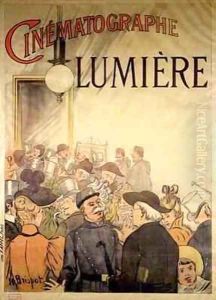H. Brispot Paintings
Henri-Joseph Brispot, often referred to as H. Brispot, was a French painter born on December 31, 1846, in Paris. Brispot was primarily known for his genre paintings, historical scenes, and for his depictions of feminine beauty. Working in the late 19th and early 20th centuries, his style was influenced by the academic art of the period, which emphasized traditional techniques and often depicted subjects with an idealized aesthetic.
Brispot trained in Paris, where the art scene was vibrant and diverse. Although not as well-known as some of his contemporaries, he developed a reputation for his carefully composed scenes that often captured moments of everyday life or romanticized historical narratives. His works were characterized by their fine detail, vivid coloration, and the delicate rendering of figures.
Throughout his career, Brispot exhibited his works at various salons, including the Salon des Artistes Français, which was the official art exhibition of the Académie des Beaux-Arts in Paris. The Salon was an important venue for artists to gain recognition, and Brispot's participation in these exhibitions helped to establish his reputation.
Brispot's artwork reflected the broader trends of the time, which were moving away from the grand historical and religious themes of earlier in the century to more intimate and personal subjects. This shift was part of a larger movement in the art world that would eventually lead to the development of impressionism and post-impressionism. However, Brispot remained largely within the academic tradition, and his work did not embrace the avant-garde movements that were emerging.
The specific details of Brispot's personal life, his training, and his influence on other artists are not widely documented, which is often the case with artists who do not achieve the highest echelons of fame. Despite this, his paintings continue to be appreciated by collectors and art enthusiasts for their beauty and craftsmanship.
Henri-Joseph Brispot died in 1916, leaving behind a body of work that offers a glimpse into the academic art traditions of his time. His paintings are held in private collections and occasionally appear in art auctions, where they are valued for their representation of the era and their classical beauty.
